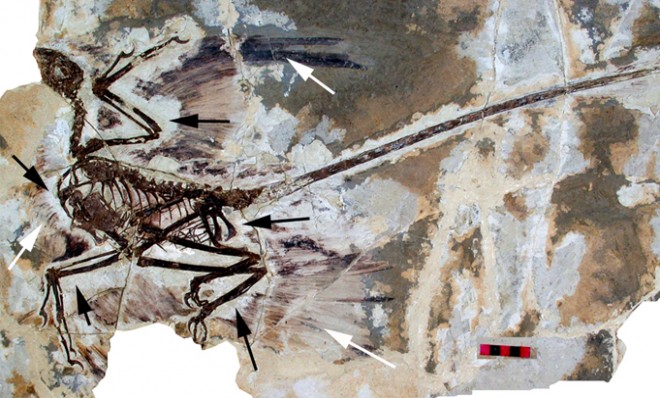Why some ancient birds had four wings
Chinese paleontologists uncover evidence of back appendages made for flying

Modern birds — especially species with big, majestic wingspans — are studies in aerodynamic efficiency, slicing through the air in ways our finest aircraft can't. But it wasn't always that way. Paleontologists in China have discovered that some long-forgotten ancestors of birds were endowed with a much more inefficient set-up: Four feathered limbs designed for flight.
By studying 11 fossils from the lower Cretaceous period 120 million years ago, scientists found clear evidence of hind wings on a few select species. "Modern birds generally work with two wings," says Amina Khan at the Los Angeles Times, "using small, clawed hind legs for ground travel."
A few, like the golden eagle, have fuzzy down on their back limbs, which is for insulating their appendages, not flying. Though researchers have unearthed evidence of downy limbs in feathered dinosaurs, little evidence existed that early birds were using those hind legs for flapping.
But 11 specimens from Liaoning in northeastern China, from several species show evidence of long, stiff feathers with curved shafts jutting out nearly perpendicular to the leg — a far cry from mere insulation. [Los Angeles Times]
According to the Chinese paleontologists, whose findings were published Thursday in the journal Science, the four-legged set-up "may have played an important role in the evolution of flight." These early bird ancestors — species like Microraptor and Sinornithosaurs — were probably in the midst of learning how to use their hind limbs on the ground. Over time, these back wings might have evolved into more functional legs, thus allowing modern hawks to snatch up prey or robins to hunt for worms in the grass.
The Week
Escape your echo chamber. Get the facts behind the news, plus analysis from multiple perspectives.

Sign up for The Week's Free Newsletters
From our morning news briefing to a weekly Good News Newsletter, get the best of The Week delivered directly to your inbox.
From our morning news briefing to a weekly Good News Newsletter, get the best of The Week delivered directly to your inbox.
Lead researcher Zheng Xiaoting of the Shandong Tianyu Museum of Nature wrote that the hind wings were "aerodynamic in function, providing lift, creating drag and/or enhancing maneuverability, and thus played a role in flight." The debate now, is exactly how these hind wings would have functioned.
In any case, this much is clear: These ancient, multi-winged creatures were probably more terrifying that we ever could have imagined.
A free daily email with the biggest news stories of the day – and the best features from TheWeek.com
-
 Political cartoons for December 7
Political cartoons for December 7Cartoons Sunday’s political cartoons include the Trump-tanic, AI Santa, and the search for a moderate Republican
-
 Trump’s poll collapse: can he stop the slide?
Trump’s poll collapse: can he stop the slide?Talking Point President who promised to ease cost-of-living has found that US economic woes can’t be solved ‘via executive fiat’
-
 Codeword: December 7, 2025
Codeword: December 7, 2025The daily codeword puzzle from The Week